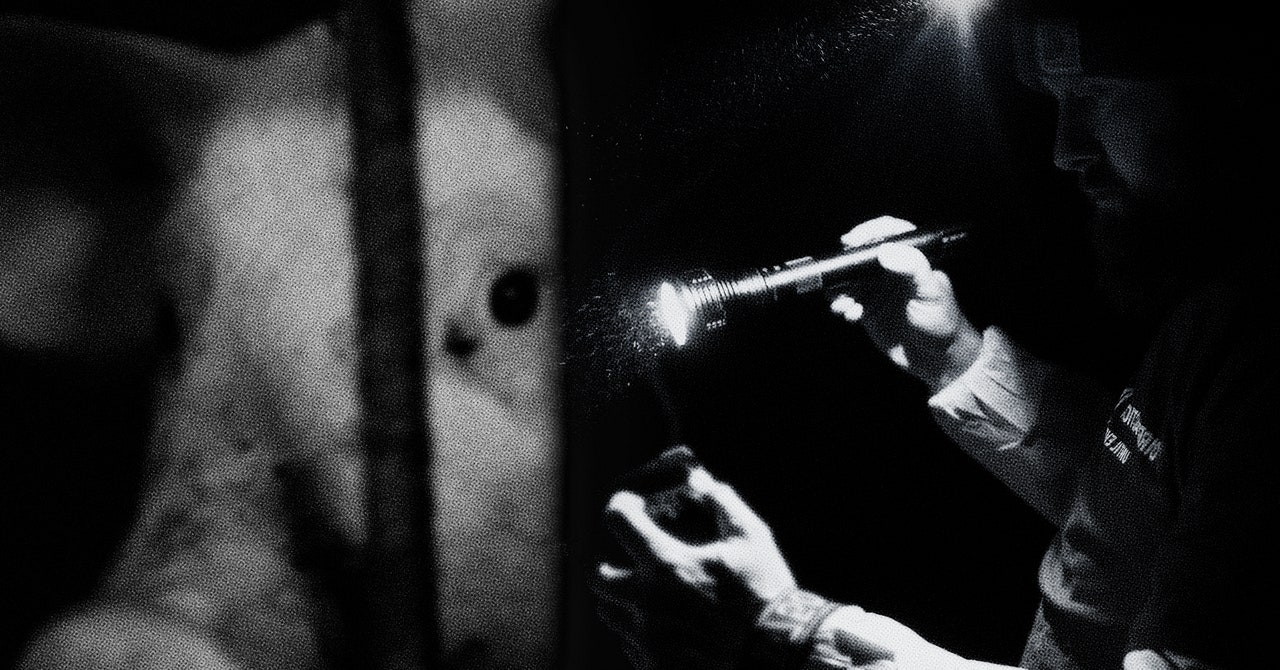Investigation Manual at https://web.archive.org/web/20231108151724/https://media.dxe.io/wl/?id=t7oJdPSHAWYZXRRLHYEXerBVZHHPCtBT
In recent years, the animal liberation group Direct Action Everywhere has carried out some of the most brazen and tech-savvy operations and investigations to ever target the animal agriculture industry. It has rescued pigs, goats, ducks, and chickens from factory farms and slaughterhouses in midnight intrusions; captured virtual reality footage with custom-built 360-degree video rigs inside massive pig barns; and used hidden cameras to record some of the meat industry’s most disturbing practices, from the carbon dioxide gas chambers that are increasingly used in pig slaughterhouses to the “ventilation shutdowns” designed to cull thousands of farm animals through overheating and suffocation.
To pull off all those revelatory and often highly controversial actions, Direct Action Everywhere (which uses the abbreviation DxE) has also spent years evolving its toolkit and operational rigor—from communications security and physical stealth, to penetration tactics for getting inside factory farms and slaughterhouses. It has also long maintained a manual of its own methods for those operations. Now, for the first time, it’s publicly releasing that guide.
The document is a rare glimpse into the detailed tech and tactics of a group that carries out sophisticated and often illegal acts of intrusion and espionage, turning a playbook that might otherwise be used by spies or thieves into one for grassroots activism. “To spend so much time thinking about the vulnerabilities in these facilities, how to get in, avenues of approach,” says Lewis Bernier, a longtime investigator at DxE who has led or participated in hundreds of operations inside farms and slaughterhouses around the country, “I think it’s really changed the way I see security as a whole.”
A note of warning: Despite the “how-to” tone of the guide itself, do not try this at home. DxE investigators frequently face criminal charges, and DxE’s critics in the agriculture industry and in law enforcement describe the group as radicals with extreme tactics. Despite the group’s nonviolent approach, the agribusiness trade group WATT Global Media wrote in 2018 that DxE “could very well be the most dangerous animal rights organization out there.” Even some other animal rights organizations have balked at their risky methods, especially given the potential for prison sentences under some US states’ severe laws protecting animal agriculture businesses.
DxE goes as far as to welcome those criminal charges, often willingly identifying themselves after an investigation’s findings are released in an effort to draw more attention to their revelations and argue the justice of their cause. In fact, the group’s cofounder, Wayne Hsiung, was convicted just last week on a felony charge of conspiracy to commit trespassing related to the removal of ducks and chickens from a California poultry farm. He now potentially faces years in prison.
Bernier says that DxE decided to publicly release its guide, even in the wake of Hsiung’s conviction, to help activists who are already committed to carrying out covert investigations do their work more safely and effectively. “More and more people around the world want to do this stuff, or at least are just interested in how it works,” he says. “I think this guide will offer an opportunity for people to understand what’s really involved.”
Much of the guide is focused less on spy tricks and espionage gear than on effective activism: team building, creating a chain of command, understanding the media, logistics, planning, biosecurity to avoid contaminating farms with disease, and creating a “security culture” that avoids the gossip, bragging, prying, and infighting that can lead to operations being blown or infiltrated by law enforcement.


